For the 2025 school year, there is 1 public preschool serving 390 students in Prosser School District.
Public Preschools in Prosser School District have a diversity score of 0.42, which is less than the Washington public preschool average of 0.71.
Minority enrollment is 75% of the student body (majority Hispanic), which is more than the Washington public preschool average of 54% (majority Hispanic).
Overview
This School District
This State (WA)
# Schools
6 Schools
801 Schools
# Students
2,460 Students
280,418 Students
# Teachers
150 Teachers
17,799 Teachers
Student : Teacher Ratio
16:1
16:1
District Rank
Prosser School District, which is ranked within the bottom 50% of all 306 school districts in Washington (based off of combined math and reading proficiency testing data) for the 2021-2022 school year.
The school district's graduation rate of 80% has stayed relatively flat over five school years.
Overall District Rank
#258 out of 307 school districts
(Bottom 50%)
(Bottom 50%)
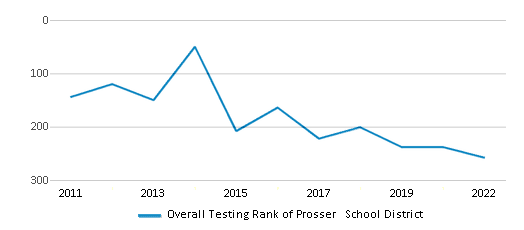
Math Test Scores (% Proficient)
24%
40%
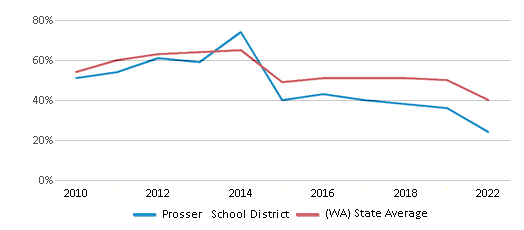
Reading/Language Arts Test Scores (% Proficient)
33%
53%
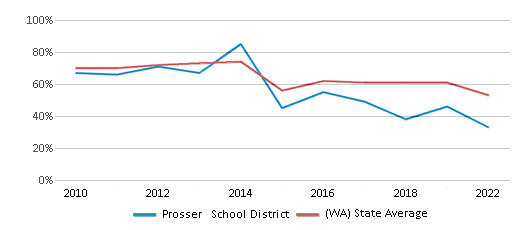
Science Test Scores (% Proficient)
35%
49%
Graduation Rate
80%
84%
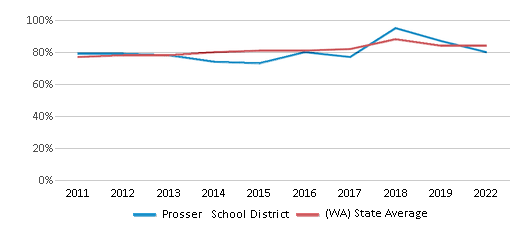
Students by Ethnicity:
Diversity Score
0.46
0.71
# American Indian Students
11 Students
2,844 Students
% American Indian Students
n/a
1%
# Asian Students
44 Students
25,971 Students
% Asian Students
2%
9%
# Hispanic Students
1,693 Students
73,094 Students
% Hispanic Students
69%
26%
# Black Students
16 Students
16,473 Students
% Black Students
1%
6%
# White Students
648 Students
129,086 Students
% White Students
26%
46%
# Hawaiian Students
2 Students
5,103 Students
% Hawaiian Students
n/a
2%
# Two or more races Students
46 Students
27,229 Students
% of Two or more races Students
2%
10%
Students by Grade:
# Students in PK Grade:
15
23,952
# Students in K Grade:
173
43,573
# Students in 1st Grade:
160
42,048
# Students in 2nd Grade:
166
43,955
# Students in 3rd Grade:
172
39,809
# Students in 4th Grade:
167
41,098
# Students in 5th Grade:
153
39,252
# Students in 6th Grade:
177
3,085
# Students in 7th Grade:
191
1,010
# Students in 8th Grade:
191
1,067
# Students in 9th Grade:
220
319
# Students in 10th Grade:
226
337
# Students in 11th Grade:
232
333
# Students in 12th Grade:
217
580
# Ungraded Students:
-
-
District Revenue and Spending
The revenue/student of $21,211 is higher than the state median of $18,796. The school district revenue/student has stayed relatively flat over four school years.
The school district's spending/student of $28,774 is higher than the state median of $19,246. The school district spending/student has stayed relatively flat over four school years.
Total Revenue
$52 MM
$20,715 MM
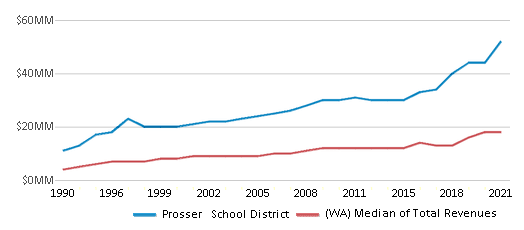
Spending
$71 MM
$21,212 MM
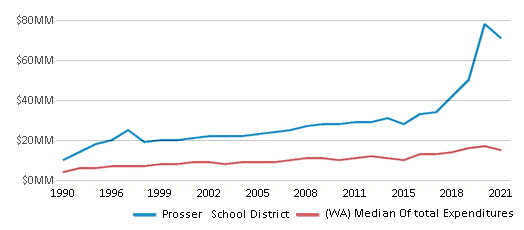
Revenue / Student
$21,211
$18,796
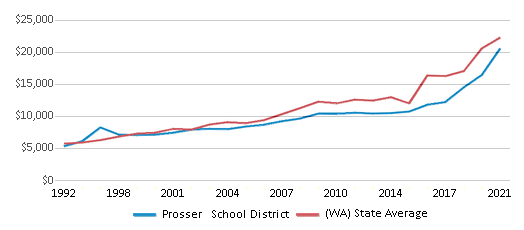
Spending / Student
$28,774
$19,246
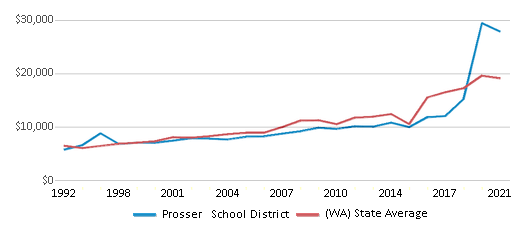
Best Prosser School District Public Preschools (2025)
School
(Math and Reading Proficiency)
(Math and Reading Proficiency)
Location
Grades
Students
Rank: n/an/a
832 Park Ave.
Prosser, WA 99350
(509) 786-2020
Prosser, WA 99350
(509) 786-2020
Grades: PK-2
| 390 students
Recent Articles

Sexual Harassment at Age 6: The Tale of a First Grade Suspension
A six-year old in Aurora, Colorado, was suspended after singing an LMFAO song to a little girl in his class and reportedly 鈥渟haking his booty.鈥� We look at the case and the sexual harassment problem in public schools today.

How Scaffolding Could Change the Way Your Child Learns
This article explores the concept of instructional scaffolding, a teaching method that enhances learning by breaking down complex tasks into manageable parts. It highlights how scaffolding supports students in developing critical thinking skills and becoming more independent learners. The article discusses the benefits of scaffolding, including improved engagement and reduced anxiety, and provides strategies for its implementation across various educational levels.

February 05, 2025
Understanding the U.S. Department of Education: Structure, Impact, and EvolutionWe explore how the Department of Education shapes American education, from its cabinet-level leadership to its impact on millions of students, written for general audiences seeking clarity on this vital institution.





